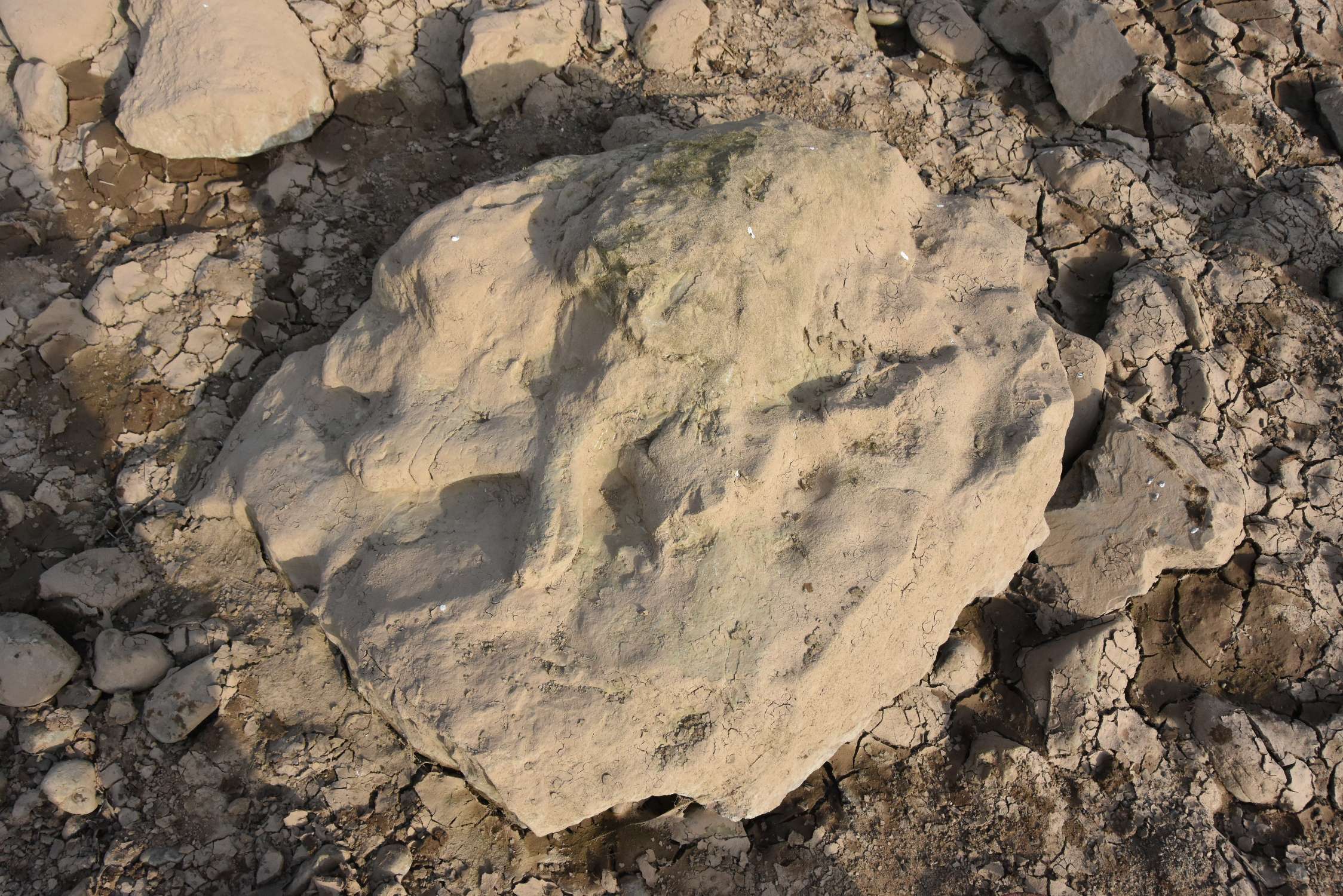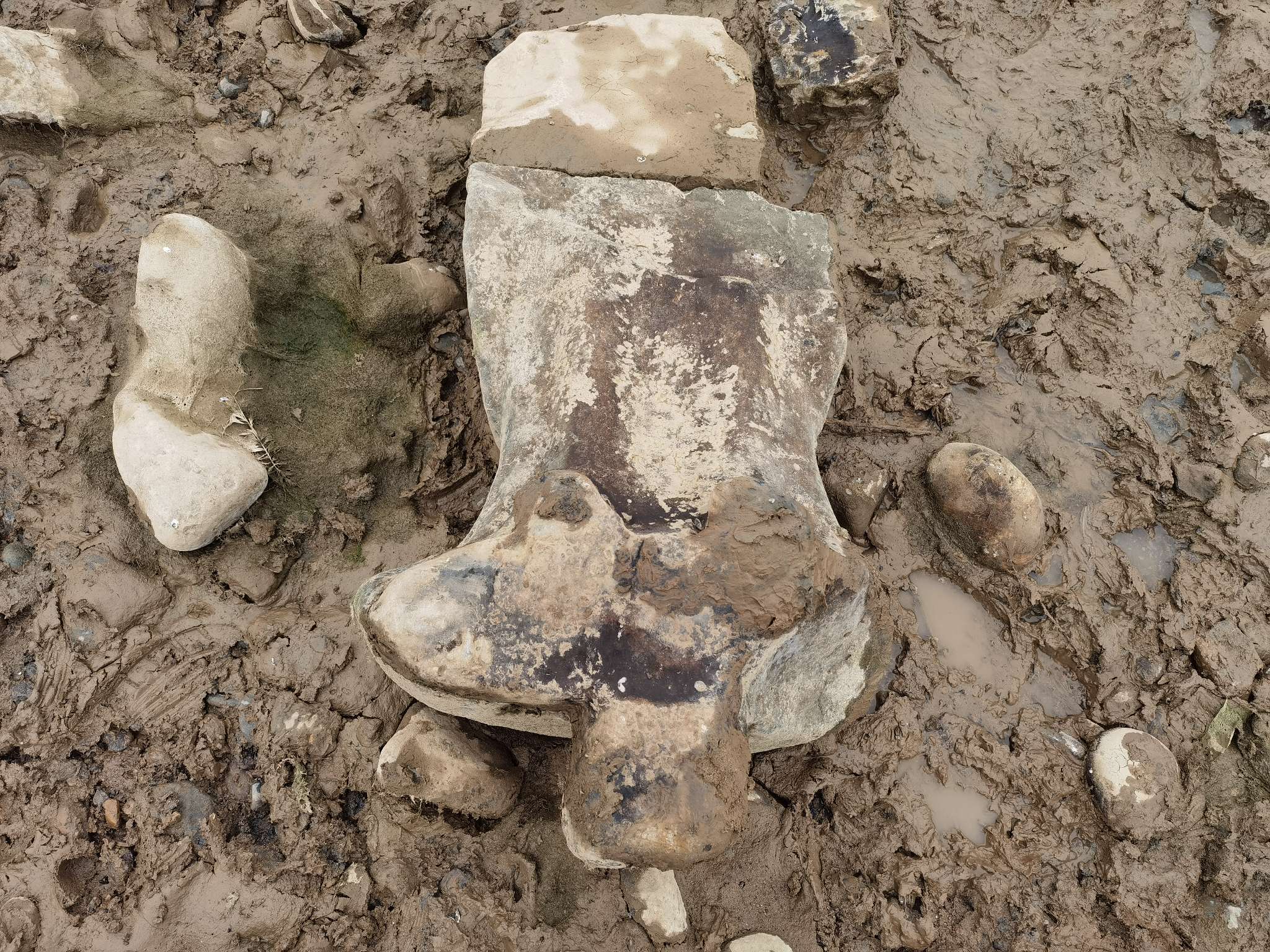Archaeologists recently discovered a Bodhisattva bust of theTang Dynasty (618-907) from the Yihe River near the Longmen Grottoes, said a source from the Longmen Grottoes Research Institute on March 20. Besides, two broken Bodhisattva statues were also discovered near a stone arch bridge of Longmen Grottoes.

A remnant of a Bodhisattva statue. [Photo provided to dahe.cn]
Recently, the scenic staff of the Longmen Grottoes refurbished the rubber dams and piers on the Yihe River. After the drainage, the riverbed of the river's eastern part became visible. On the morning of March 18, a staff member with years of maintenance work experience at Longmen Grottoes noticed a carved remnant among numerous broken stones, pebbles and silts on the riverbed. According to archaeologists at Longmen Grottoes Research Institute, it is believed to be a remnant of a Bodhisattva statue of the Tang Dynasty.

A remnant of a Bodhisattva statue. [Photo provided to dahe.cn]
According to Lu Wei, director of the Research Center for History and Humanities of Longmen Grottoes Research Institute, the whole statue is cylindrical in shape and the remnant (below the statue's chest) is divided into two sections with a broken mark between the chest and abdomen. The statue has a skirt, with short embroidered cape hanging naturally, standing on alotus seat. It seems that the statue also wears shoes. The front of the lotus seat is missing now, with a tenon beneath it. It is believed that the original statue should have a base with a mortise on it to ensure that the statue can be placed upright.
The archaeologists also discovered two broken Bodhisattva statues near a stone arch bridge of Longmen Grottoes. One of them is carved on a largerock. Only the statue's legs and feet are preserved. The remnant is believed to be a Bodhisattva statue sitting cross-legged or in a joyful posture, with the upper body (above the statue's waist) missing. It has not been relocated due to its heavy weight and time constraints.

A remnant of a Bodhisattva statue. [Photo provided to dahe.cn]
The appearance of statues in the Yihe River can be attributed to two factors, according to Lu Wei.
On the one hand, the ancient Yihe River used to be with a large water flowonce destroying temples. According to the historical document, "In February of 722AD, the Yihe River was flooding, destroying Tianzhu and Fengxian temples located in the Longmen area." Fengxian Temple was a royal temple built with the decree of Emperor Gaozong (628-683) of the Tang Dynasty, responsible for the daily maintenance of the famous Vairocana Buddha. Some statues might be washed into the river with the destruction of the temple.
On the other hand, during the first half of the 20th century, the Longmen area was damaged by quarrying and theft, and some statues fell into the river and were washed downstream. Over the time, their surface has become smooth due to water erosion, but their decorations look less clear and exquisite now.

A remnant of a Bodhisattva statue. [Photo provided to dahe.cn]
Over the years, Lu Wei has found four cultural relics in the Yihe River during dredging or tourism facility construction, all of which have been protected at Longmen Grottoes Research Institute. According to Lu Wei, these newly-discovered statues are very helpful forgrot to research, since they can not only enrich the collections of Longmen Grottoes Research Institute, but also deepen the research on the historical and cultural connotation of the statues, including theirartistic value, cultural connotation, and damages in the history.
"The Yihe River archaeological work is one of our main jobs, too. In the future, we will pay more attention to the projects and dredging of the Yihe River and strengthen our archaeological work, looking forward to more discoveries," said Lu Wei. (Chinese source: dahe.cn Reporter: Mo Shaohua Translator: Yang Jiaxin Intern: Qiu Changqi and Li Kai and Li Yan Proofreader: Chen Xingjie)


